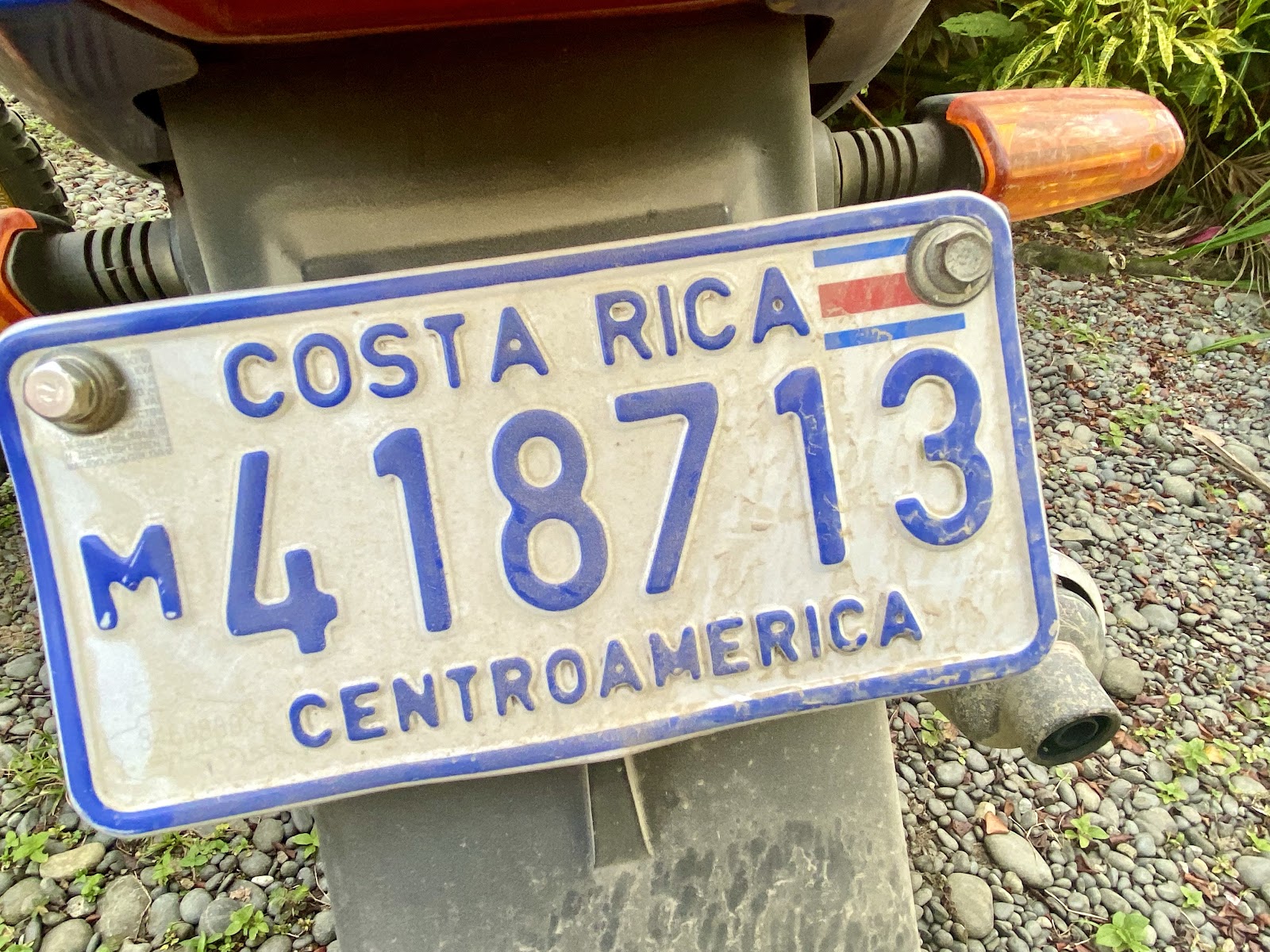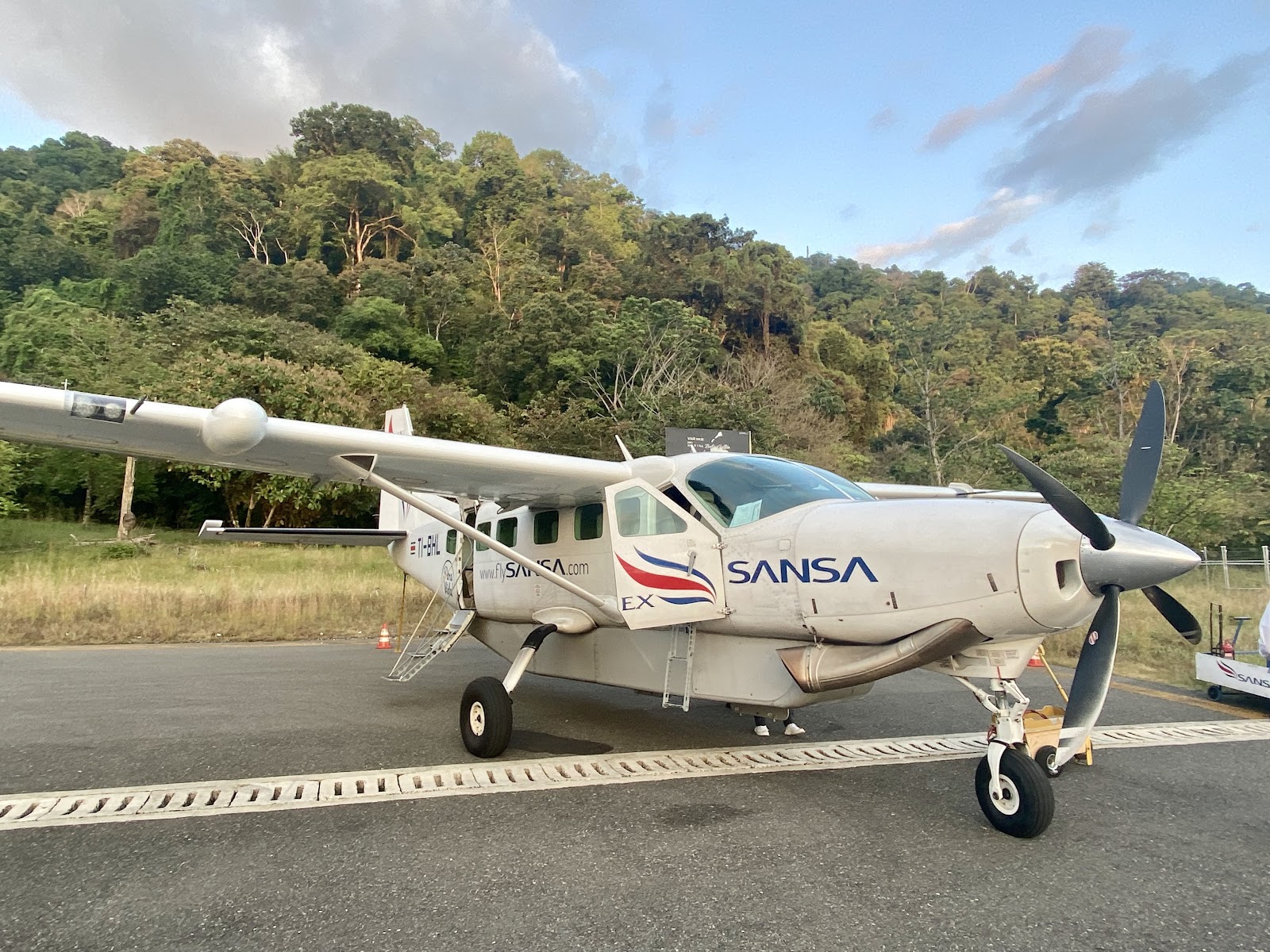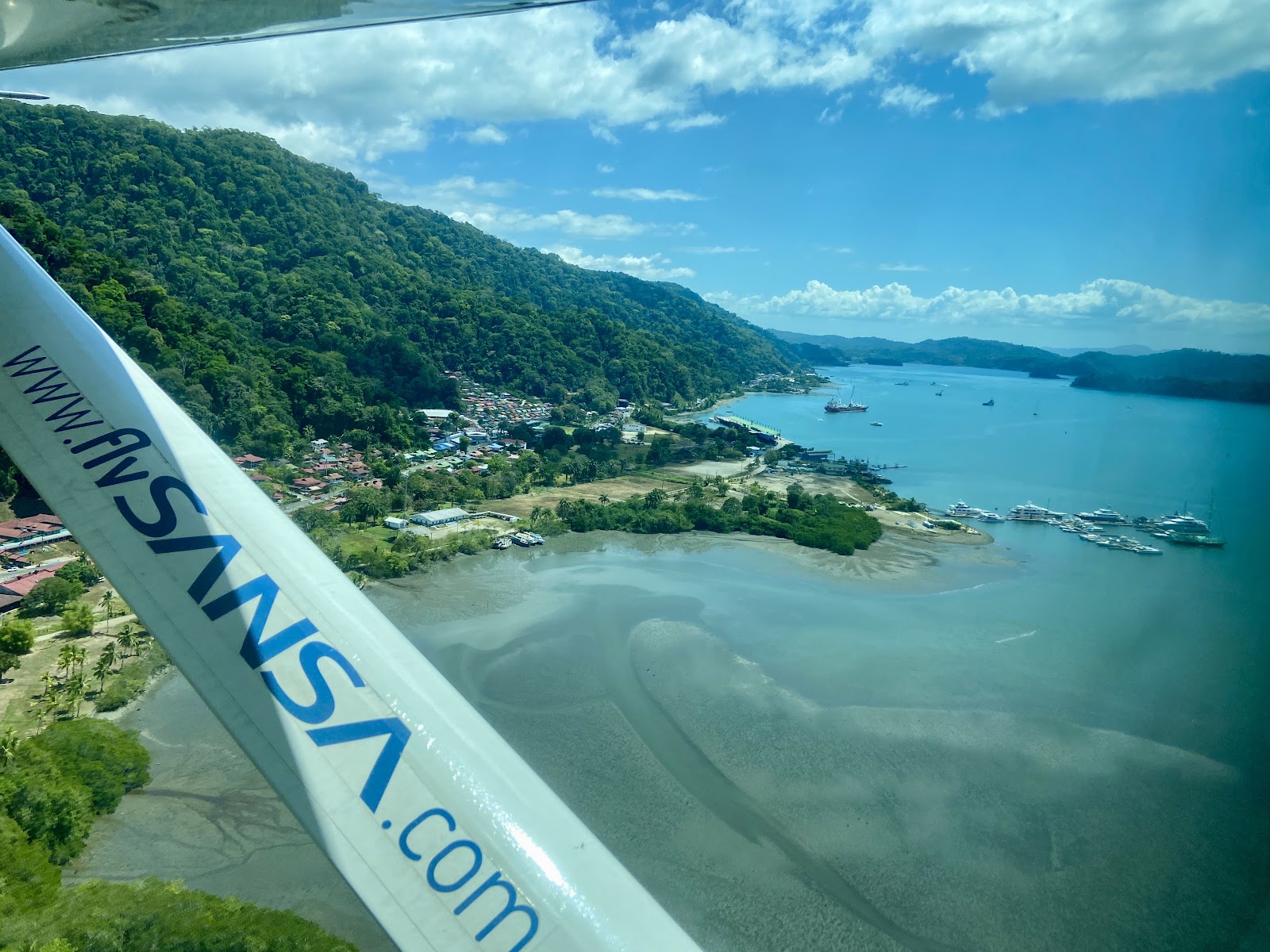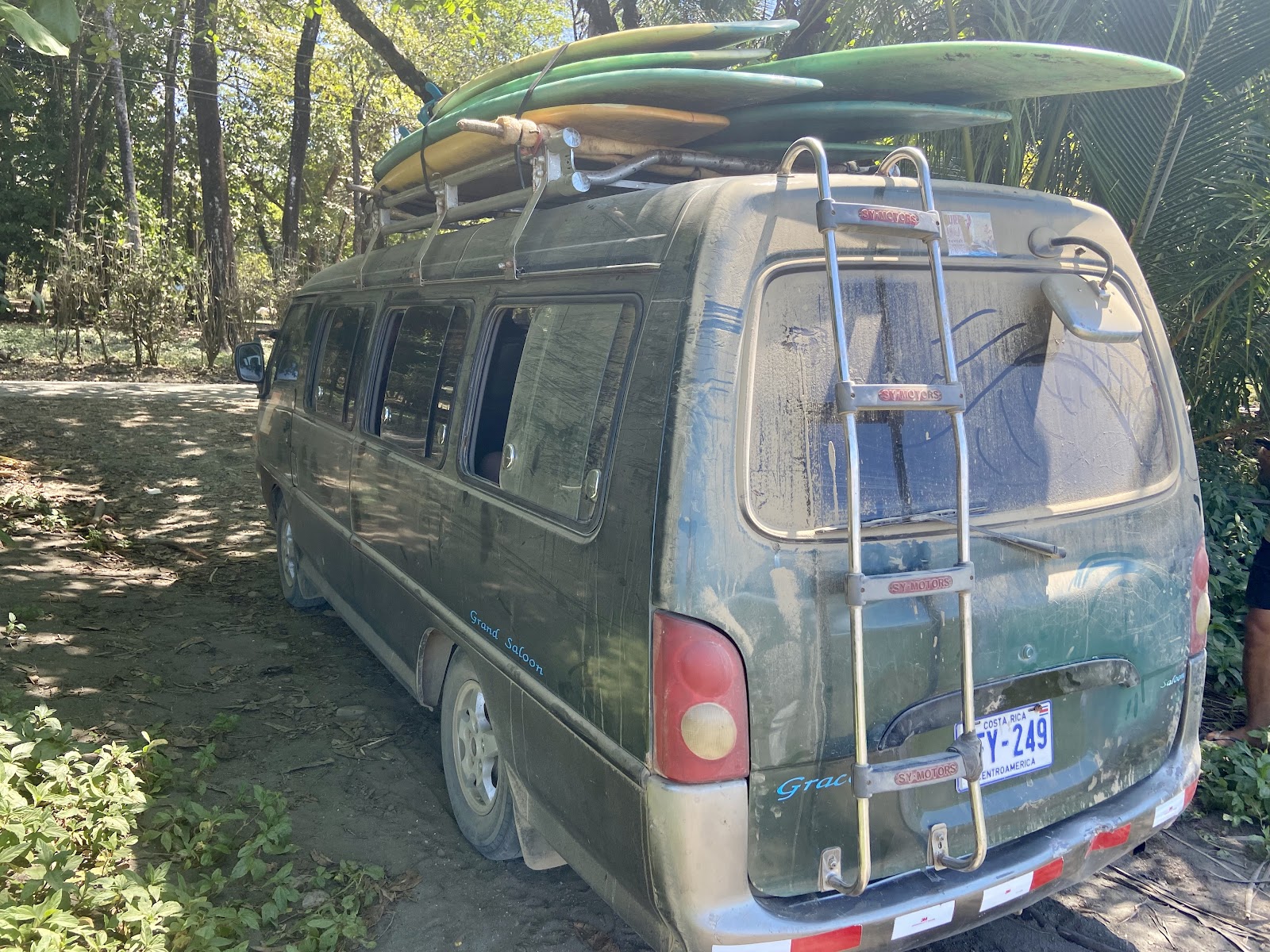Costa Rica is among the most stable and peaceful countries in Central America. Its democratic constitution provides social, economic, and educational freedoms for its citizens. The ecotourism industry has shifted the economy from agriculture to services and technology. Costa Rica is known for its strong commitment to the environment, including its national parks. The small country proudly shelters 5% of the world's biodiversity.
The Southern Pacific region is a remote area nestled between jungle and ocean. It is less developed than other parts of the country, and less crowded. Pura vida is used by locals in everyday speech to express gratitude, and embrace their simple, relaxed lifestyle.
On Friday evening, I took a redeye to San José, with a stop in Atlanta. As the plane began its decent, I caught a glimpse of a beautifully lush, green landscape with endless sunshine. I met a few other amigas at the airport. 12 of us travelled from Canada and the US, each one different but sharing a common sense of adventure.
The retreat was held at Casa Marera Alta. This locally-owned beach front eco-lodge sits at the edge of a 800-acre private biological reserve. The grounds are thick with vegetation and brimming with sounds of ocean waves, cicadas, and howler monkeys. Meals are served at a covered restaurant area; delicious buffets of rice and beans, a variety of veggie dishes, local fruits, and fresh juices. The cabanas are simple and rustic (think summer camp).
Dry season temperatures soar in the 80s, but feel hotter with the humidity and high UV index. Everything is always wet and sandy (or "jungle dry"), which challenged me to be comfortable being uncomfortable. Rainy season is cooler, but rife with mosquitoes.




Our days started early with a morning surf lesson before the heat set in. The amigas were split into two or three groups based on ability.


Punta Banco is a fun wave directly out front. Down the beach, Sotavento has gentler waves. A short car ride away is Pavones, which has the second longest wave in the world! We also checked out a few hidden spots that are often empty, like Sawmills and Leftovers.
The icy Pacific waters on the Oregon Coast are much warmer down south. Instead of wearing a wet suit, locals wear rash guards for protection from the sun and their boards.
Surfing takes patience, persistence, and a bit of luck. It also produces a natural high, which inspired the term "frothing." Research shows that surfing elevates levels of dopamine and adrenaline in the brain, and sea spray from crashing waves releases negatively charged ions into the air--all of which makes us feel great!


My favorite surf was on the last day. We went to at "Leftovers," which is a left point break at the end of the bay--so it gets all of the leftover waves. The conditions were perfect, the water was turquoise, and everyone in my group caught their own "cute" waves.
The surf instructors reviewed our video footage with us after each session, and led informal classroom sessions to solidify concepts and provide tips on surf forecasting. As Carly explained, the wave energy comes from the moon, and travels a long way to the beach; it's our responsibility to carry that energy forward into the world.
Before this week, I had surfed only three times--twice in Oregon and once in Australia. Being a strong swimmer helped me paddle for waves, being comfortable in the ocean gave me confidence, and being a yogi provided stability on the board. My goals for the future are to commit my "pop up" to muscle memory, and to continue learning the art of reading waves.
As a remedy for our sore muscles, daily yoga classes are held at an open-air studio in the middle of the jungle. The gentle movements, stretches, and breathing techniques are beneficial to improving surfing, as well as healing and preventing injuries. Yin is a slow-paced, restorative style of yoga, aimed to promote relaxation, circulation, and release.
The yoga instructor, Saanti, works seasonally on retreats. Based in California, she is a talented seamstress and entrepreneur of SunseekCo. Fueled by passion for the ocean, she makes one of a kind swimsuits from recycled materials that are soft and beautiful.
We had plenty of downtime to reconnect with nature and practice Spanish. I loved watching the tides change throughout the day, and sharing sunset beers before dinner. Sunrise and sunset were around 6am and 6pm everyday; daylight at the equator is generally constant year round at about 12 hours. And did I mention the stars? Wow.
On Sunday afternoon, Viv and I rode bikes into the small town; the kind of town where everyone knows each other and waves.


The next afternoon, Clyde led a rainforest hike. His father acquired the land 50 years ago with the intent to make an orchard, and sell the produce to support his family. Eventually, his plan morphed into using the reserve for tourism. Aside from our retreat lodging, Tiskita Jungle Lodge is a place for visitors to experience the natural wonders of primary and secondary tropical rainforest. The biological reserve protects an array of wildlife, including monkeys, sloths, toucans, macaws, agouti, and coati. An organic orchard is home to more than 125 types of tropical fruit. The vegetation stays dry year round because of the waterfall and fresh water pools.




Thursday was ladies night out in Pavones. At sunset, we watched the surfers fight for their chance on the epic left point break. Afterwards, we shared a delicious meal and margaritas at Cafe de la Suerte.
The following afternoon, we shopped for locally made products, and learned how to make chocolate. At each location, Surf with Amigas partners with a non-profit that is working to improve the lives of locals. Travel is more meaningful when you give back.
A big thank you to the Surf with Amigas crew and everyone that makes these retreats happen. Stay frothy!























